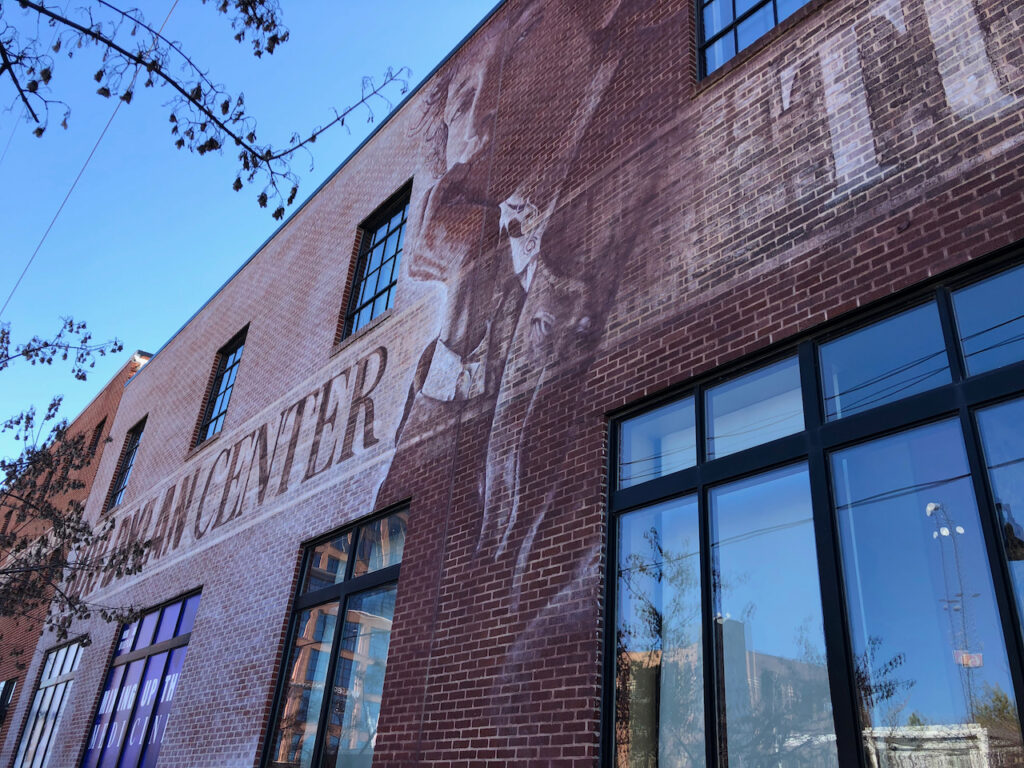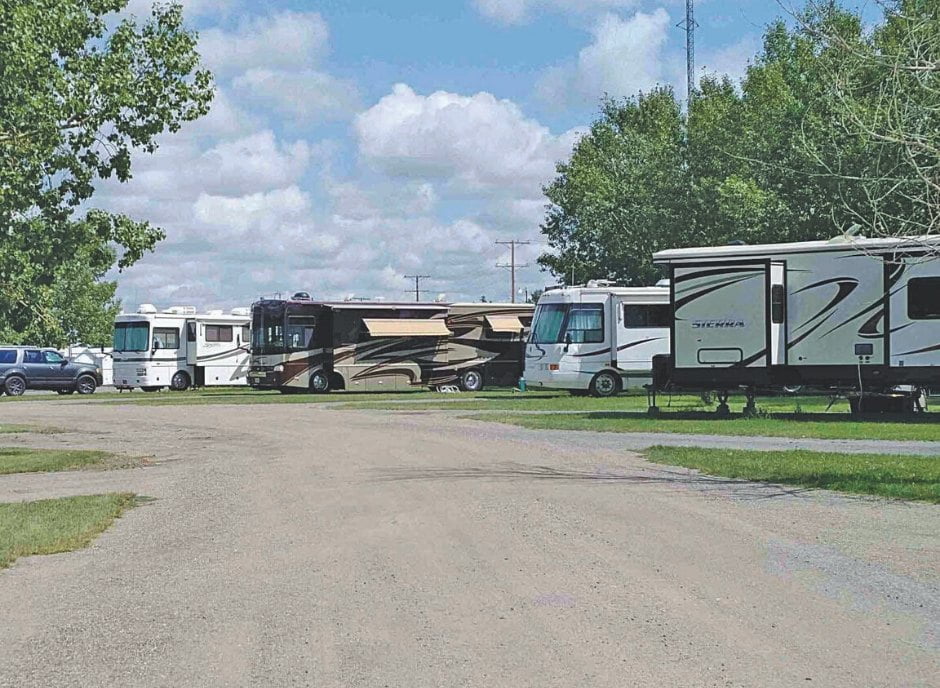Ask any eight-year-old what the most incredible thing on the planet is, and the word “dinosaurs” will find its way into the conversation. Then scratch the surface of many adults, and you may find that kidlike fascination lives on. Canada and the United States are filled with sites preserving the tracks and remains of the primordial giants that once ruled the continent’s land and water. With many locations in the great outdoors, there is no better way to explore than by RV.
Want to dive into a search for the tracks of dinosaurs? Across North America, world-class museums and national, state, and provincial parks have stepped forward to protect these sites of prehistoric history. Millions of years ago, inland seas covered large parts of the continent; when they finally receded, they left a thick layer of marine deposits and the entrapped remains of fish, reptiles, and dinosaurs. Time, wind and water, and some pretty sophisticated diggings have brought some of these remains to the surface. Here’s a little digging of our own . . .
1. Museums
Museum exhibits on dinosaurs are a great way to gather information and light the fire before a trip, a great way to learn more while on a road trip, and the perfect way to remember those warm memories after returning home.
Royal Tyrrell Museum (Drumheller, Alberta)
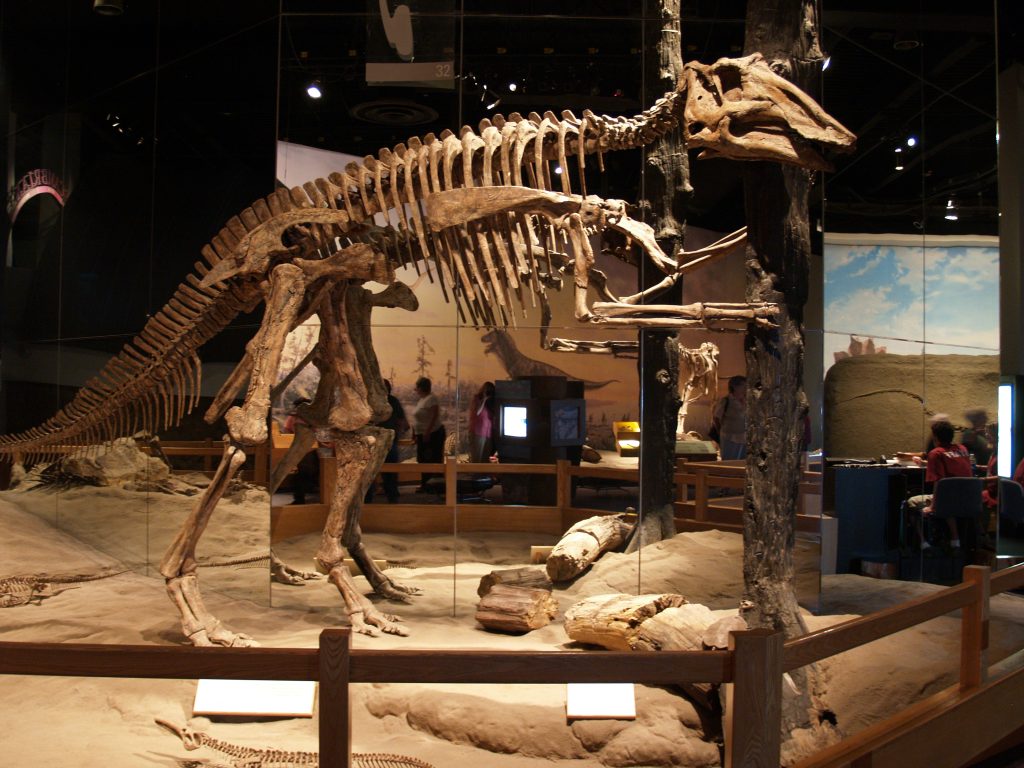
The Bearpaw Sea—the last of warm, inland seas that once covered North America—receded 72 million years ago, leaving a thick layer of marine deposits and the entrapped remains of fish and reptiles rich with clues to the Age of Dinosaurs. The museum’s paleontologists have scooped up these remains, studied them, and preserved them as part of their research into the planet’s history.
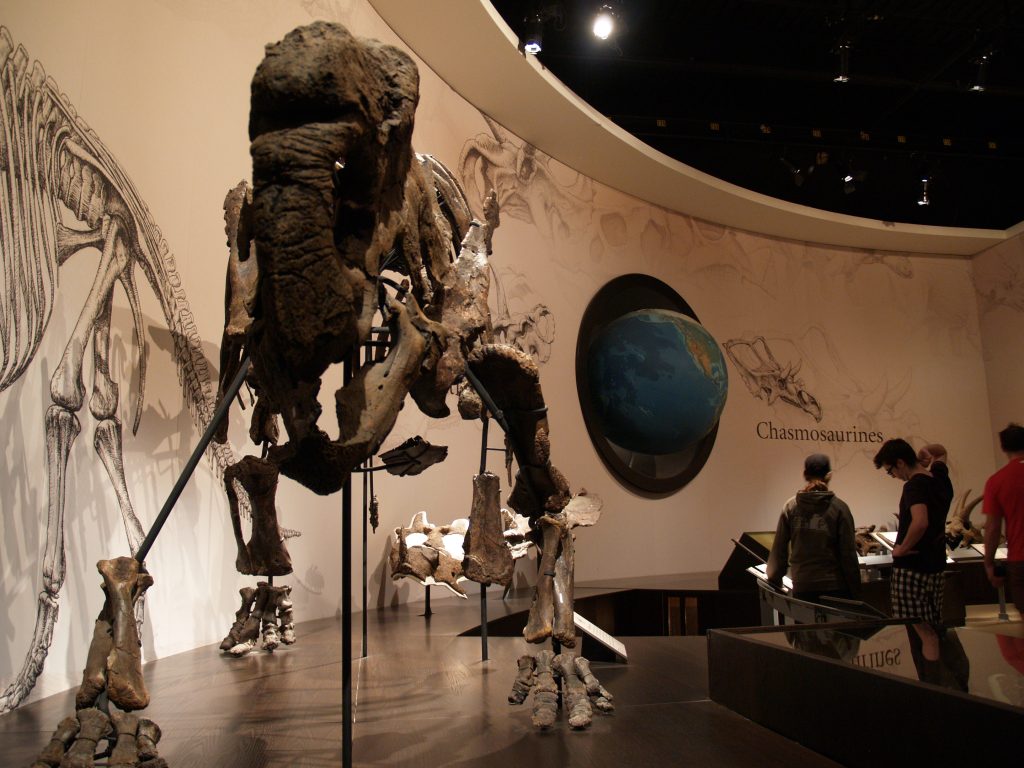
The spacious galleries are a 3.9-billion-year journey through time and home to the “footprints” of these ancient creatures, from tiny, bizarre critters to one of the world’s largest collections of giant dinosaur skeletons. The Royal Tyrrell Museum of Palaeontology is Canada’s only museum dedicated exclusively to studying ancient life.
Canadian Museum of Nature (Ottawa, Ontario)
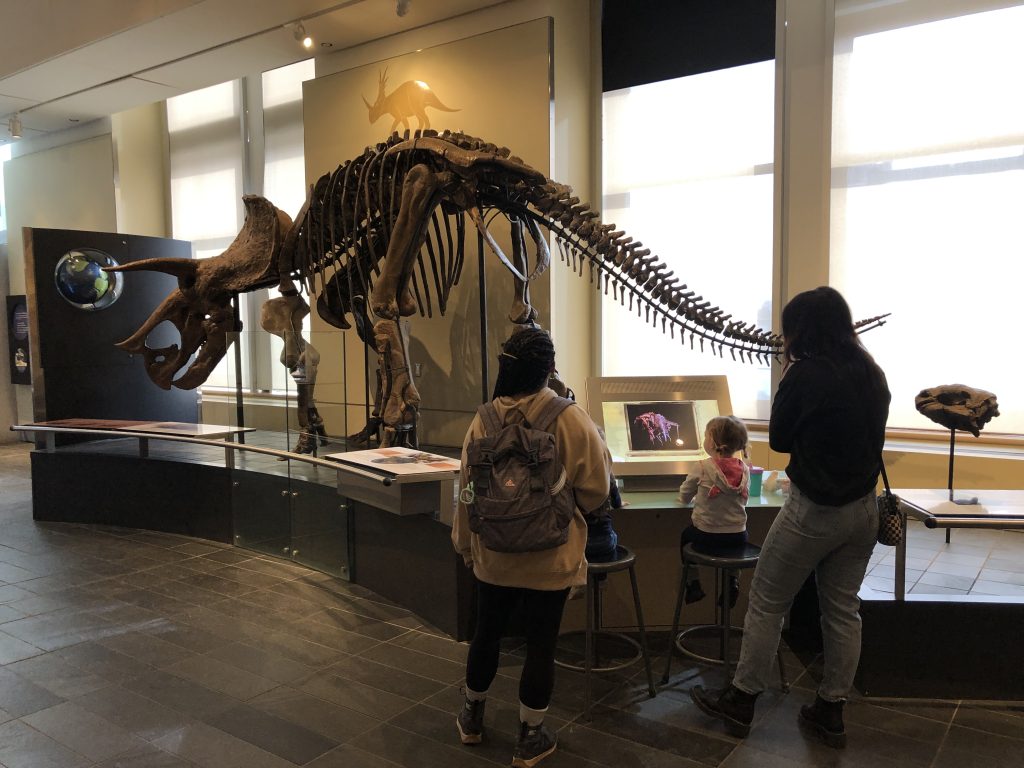
It’s an “eyes open wide” experience at the Canadian Museum of Nature in downtown Ottawa. The imposing stone building houses a collection of complete skeletons, models, and touchable parts representing a period ranging from two-billion years ago to around 3,000 years ago, focusing on specimens from sites across Canada.
The museum is also home to one of the best collections of horned dinosaurs in the world, including the newest discovery, Spiclypeus shipporum, with its uniquely ornamented head frill, in which some of the adorning spikes curl forward, and others project outward.
Royal Ontario Museum (Toronto, Ontario)
The Royal Ontario Museum’s (ROM) Age of Dinosaurs Gallery is home to many “uniquely here” dinosaur experiences showcasing one of the world’s best collections, primarily collected from the rich fossil fields of Alberta.
Kids (young and old) can tick off all the favourites—Tyrannosaurus Rex, Stegosaurus, Triceratops—but the museum also boasts an impressive collection of dinosaur skulls, the skeleton of a giant sea turtle, and a world-recognized group of plant-eating, duck-billed dinosaurs.
The show’s star is the 27 metre-long Barosaurus, the skeleton of a giant, long-tailed, a long-necked plant-eater that roamed the Earth 145 million years ago. Nicknamed “Gordo,” it is the giant real fossil dinosaur skeleton mounted in Canada and one of only three complete Barosaurus skeletons on display worldwide.
Museum of the Rockies (Bozeman, Montana)
Make a beeline for the Dinosaurs Under The Big Sky exhibit, one of the world’s largest and most up-to-date collections of North American dinosaurs. The large Hall of Horns & Teeth is home to the enormous carnivorous Tyrannosaurus rex (including displays of the largest and smallest skulls ever discovered), the three-horned Triceratops, “Big Al”—a nearly complete Allosaurus that lived during the Jurassic Period—and Oryctodromeus, the first dinosaur known to dig burrows and care for its young inside its dens. The Hall of Growth and Behavior is a window into dinosaur eggs, nests, and babies.
Fun fact: The museum’s Curator of Paleontology, Dr. Jack Horner, was the inspiration for the main character in the film Jurassic Park, also advising director Steven Spielberg on the first five films in the series.
Visitors can see the paleontology crew in the data-rich Bowman Dinosaur Viewing Lab, where they carefully remove the rock that encased fossils for millions of years. The specimens are studied for clues about their growth, development, behaviour, and environmental interactions.
Field Museum (Chicago, Illinois)
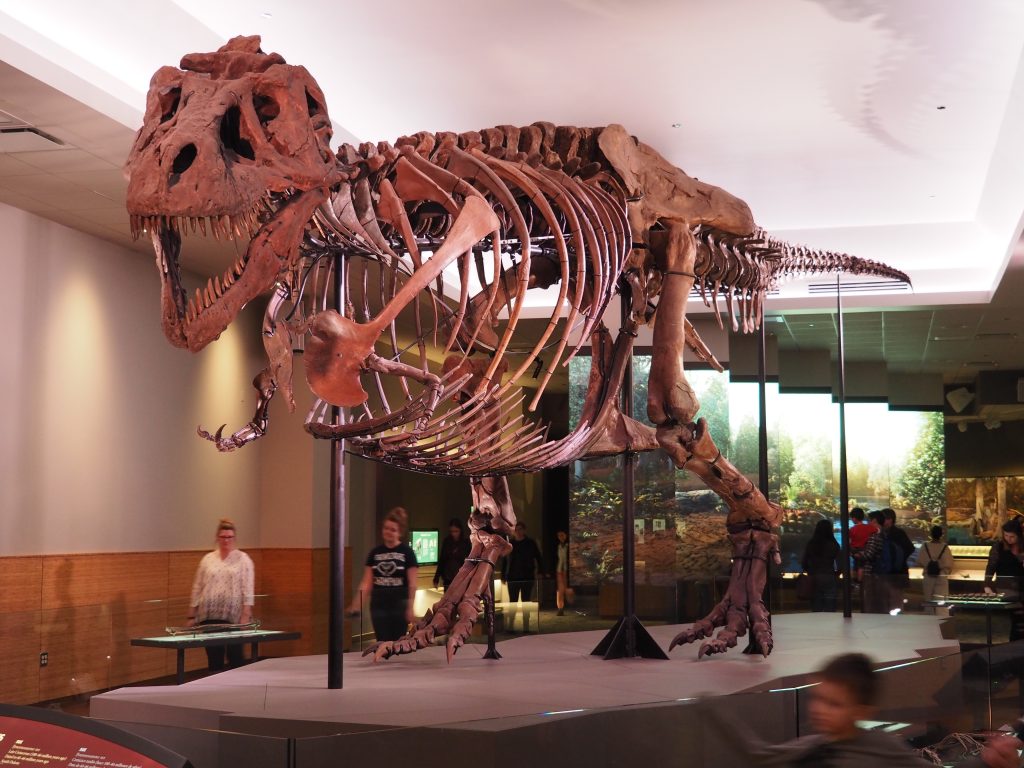
Chicago’s Field Museum is one of the largest natural history museums in the world. The museum’s Elizabeth Morse Genius Hall of Dinosaurs is home to a real showstopper (and the Field’s most iconic display), “SUE the T. rex”; at 12.3 metres in length, SUE is the largest and best-preserved Tyrannosaurus rex ever discovered. A unique media experience recreates South Dakota 67 million years ago, adding sensing stations to experience how a T. rex sounded, how its skin felt, and even how its breath smelled.
2. Exploring the great outdoors
Searching out one of the many parks and protected sites is a beautiful outdoorsy way to see where the specimens that end up in museums are discovered initially. Please note: Removing fossils or bones from any of these protected sites is illegal!
Dinosaur Provincial Park (Southeast Alberta)
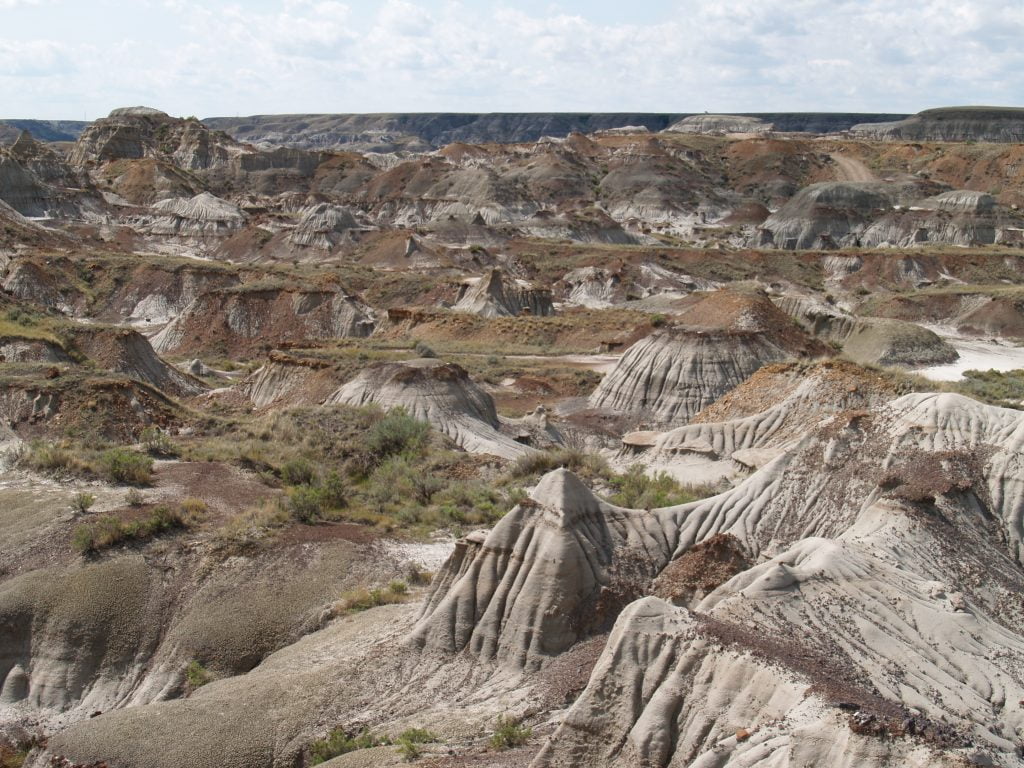
At the northern limit of the Great Plains is a 75 million-year-old time capsule: the rocks in the Alberta Badlands contain the largest concentration of late Cretaceous dinosaur fossils on the planet. A guided tour through Dinosaur Provincial Park, a UNESCO World Heritage Site, is all about experiencing the outdoors and seeing actual fossils in the ground.
The park’s various daily programs span from guided hikes at all skill levels, family-friendly bus tours through the rugged, semi-arid badlands, to a hands-on guided dig, where you work on an actual fossil excavation at one of the world’s richest fossil deposits.
Grasslands National Park (Southern Saskatchewan)
The mixed-grass prairie ecosystem of southern Saskatchewan is protected inside the boundaries of Grasslands National Park. At one time, prehistoric creatures, including dinosaurs, wandered through the jungles of what are now badlands and prairie. The park’s East Block Badlands contain some of the richest resources for dinosaur deposits in Canada and one of the scarce places in the world that reveals the Cretaceous-Tertiary Boundary—the thin, white, chalky layer in the soil separating the age of dinosaurs from mammals. Below the line, dinosaur fossils are found, and above the line are mammal fossils.
In 2023, Parks Canada is offering Fossil Fever (August 15 to 19), where small groups work on a day’s dig with a crew of paleontologists to uncover the secrets of ancient dinosaurs.
Dinosaur National Monument (Utah/Colorado)
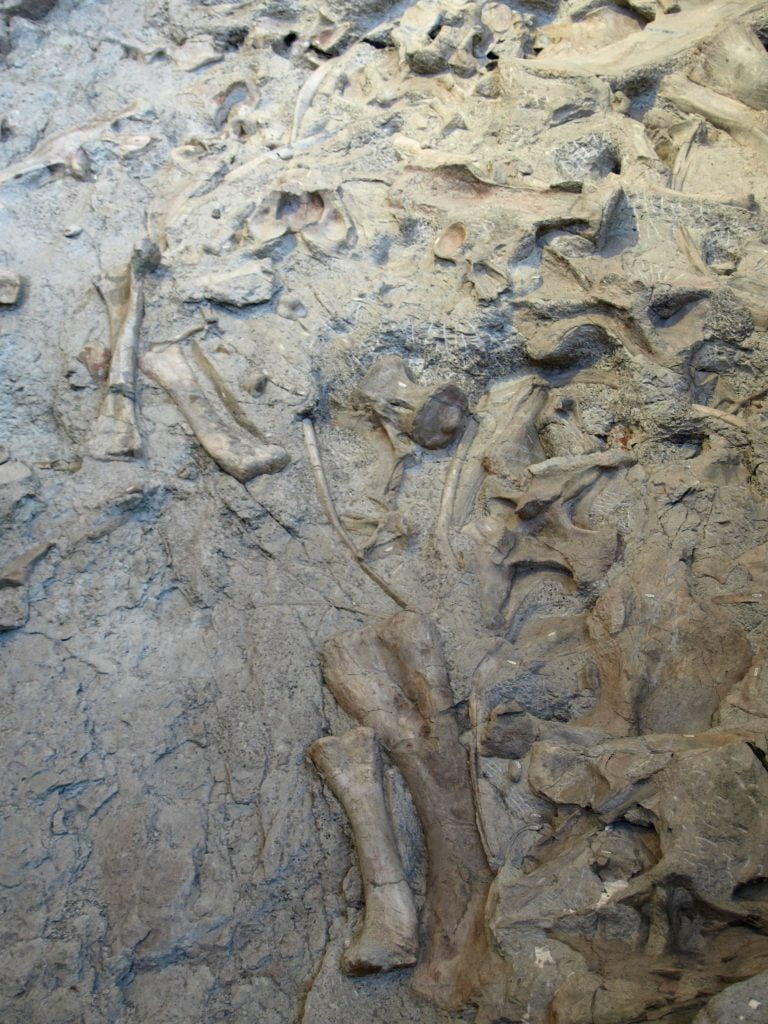
Straddling the border of Utah and Colorado, this expansive, remote site is the only National Park site established to protect dinosaur remains. What makes Dinosaur National Monument (DNM) special is the fossil-rich rocks, creating one of the best-known windows into the world of Upper Jurassic-era dinosaurs (a golden age for the biggies). The monument’s protected excavation site holds fossils from 400 different dinosaurs.
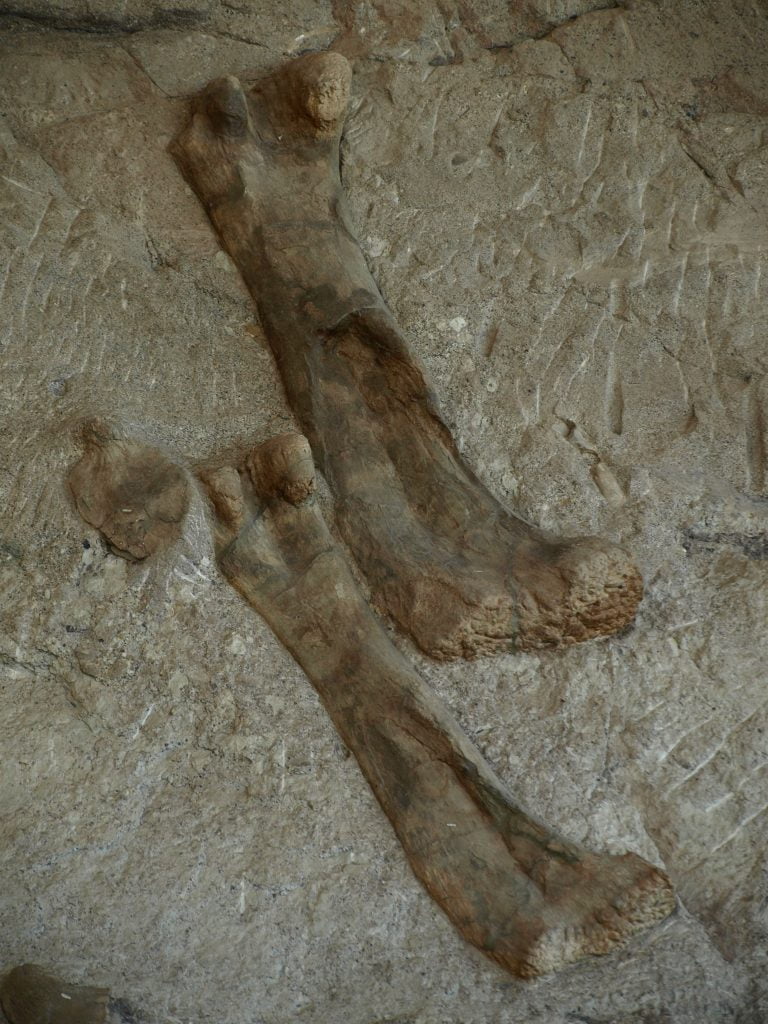
Dinosaurs roamed this area for more than 100 million years. At one time, an ancient river flowed across a vast plain. A prolonged drought killed many dinosaurs, and their remains were collected in and near the dry river channel. When extensive rains came, the bones tumbled together into a “dinosaur log jam.” The bounty of their fossilized remains was discovered in the early 1900s, and rather than being removed, a building was constructed around the dig site.
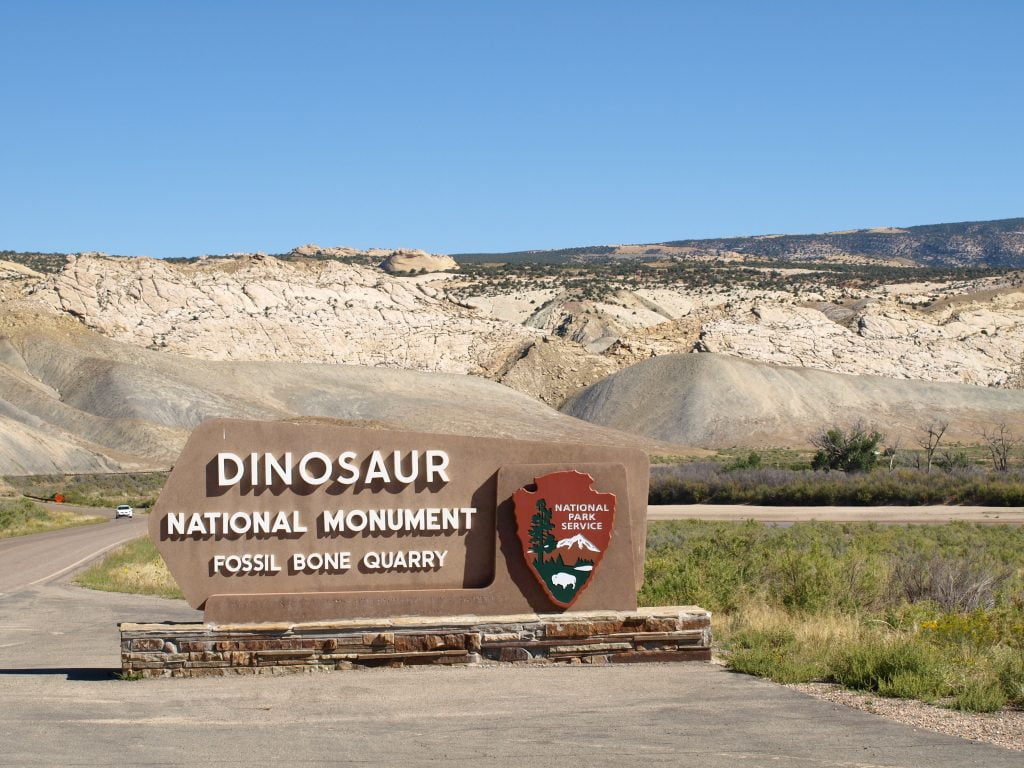
The Quarry Exhibit is considered one of the best places in the world to see dinosaur bones in place. More than 1,500 were exposed on the rock face, including those from Allosaurus, Apatosaurus, Camarasaurus, Diplodocus, and Stegosaurus.
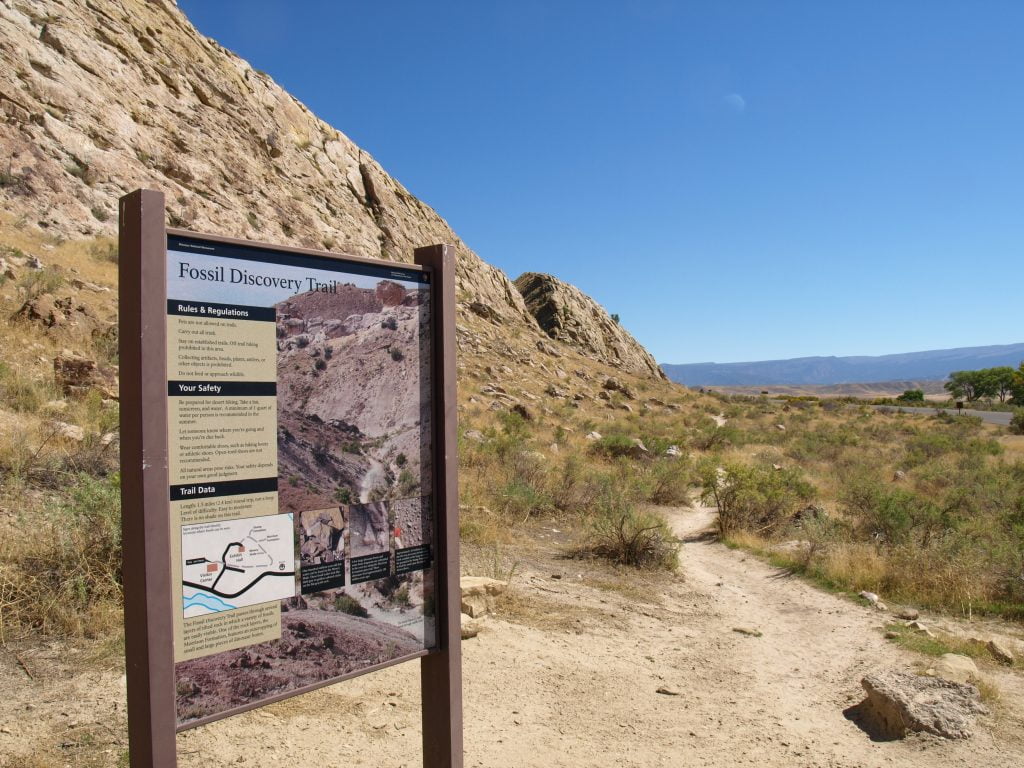
The Fossil Discovery Trail connects the parking lot to the Quarry Exhibit and is a hands-on way to get out and see the region’s geologic uplift up close.
Big Bend National Park (Texas)
Well off the beaten path, hugging the Rio Grande, isolated Big Bend National Park is one of our favourites. The rugged landscape is one of the only spots in the National Park lands where the Cretaceous-Tertiary Boundary is exposed in the geology above the surface.
The world’s most giant known flying dinosaur was discovered here—a Pterosaur with a 10-metre wingspan. A life-size replica soars near the ceiling of the park’s Fossil Discovery Exhibit.
Several other dinosaur species were discovered in, or are only found at, Big Bend, including types of horned dinosaurs, duck-billed dinosaurs, and a giant alligator that most likely preyed on the land dinosaurs.
Petrified Forest National Park (Arizona)
More than 225 million years ago, the grasslands of central Arizona were more like a humid, tropical soup. Dinosaurs and giant reptiles roamed the forests of huge trees. The region was uplifted, the climate changed, and the landscape became today’s high, dry grasslands. Once buried in silica-laden groundwater, the giant logs from fallen trees have been preserved as colourful petrified wood.
There is more to Petrified Forest than its famous fossil plant deposits; it’s also known worldwide for its fossilized reptiles. The park can be explored along a 45 km drive or several short trails. Warning: It is illegal to remove any of the petrified wood. Mysteriously bad luck follows those who do!
3. Planning on exploring the world of dinosaurs? Here are some other helpful resources
For trips in the U.S., fossils and dinosaur remains can be found at dozens of U.S. National Park Service (USNPS) sites. The USNPS also has a page dedicated to the Age of Dinosaurs.
For trips in Canada, information can be found on Parks Canada sites. Most parks have campgrounds that can accommodate RVs, but research individual park websites for more details.
The excellent CityPASS® program offers affordable ways to experience several major attractions in each city at one base ticket price. It includes offers for admission to these dinosaur museums:
- Field Museum in Chicago.
- The ROM in Toronto (reservations required).


